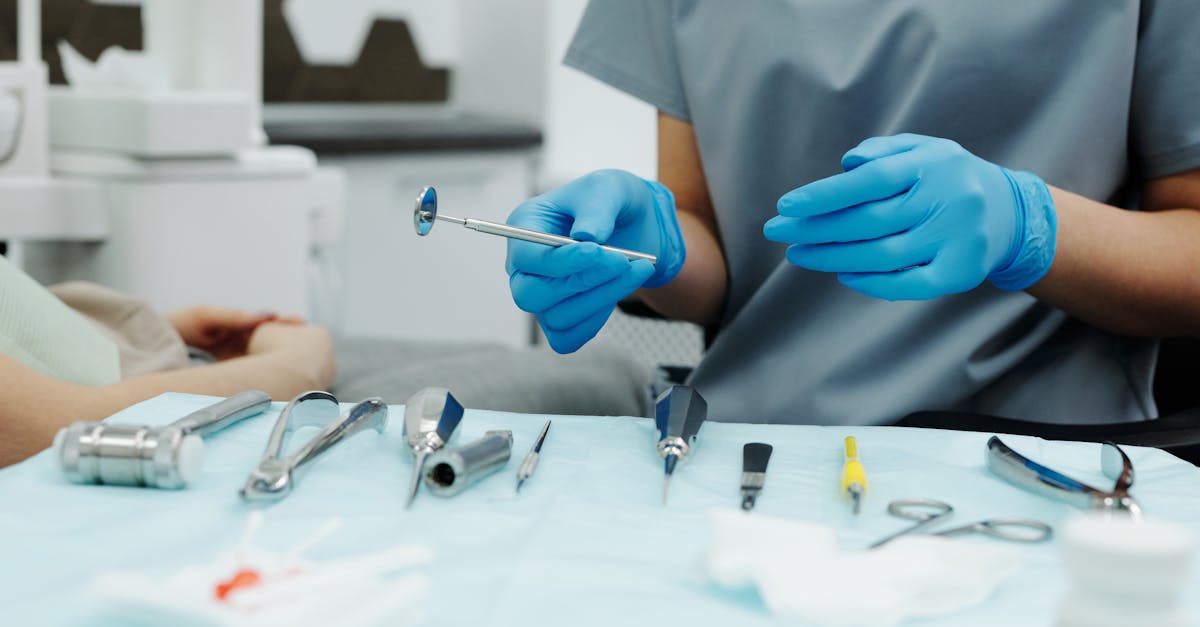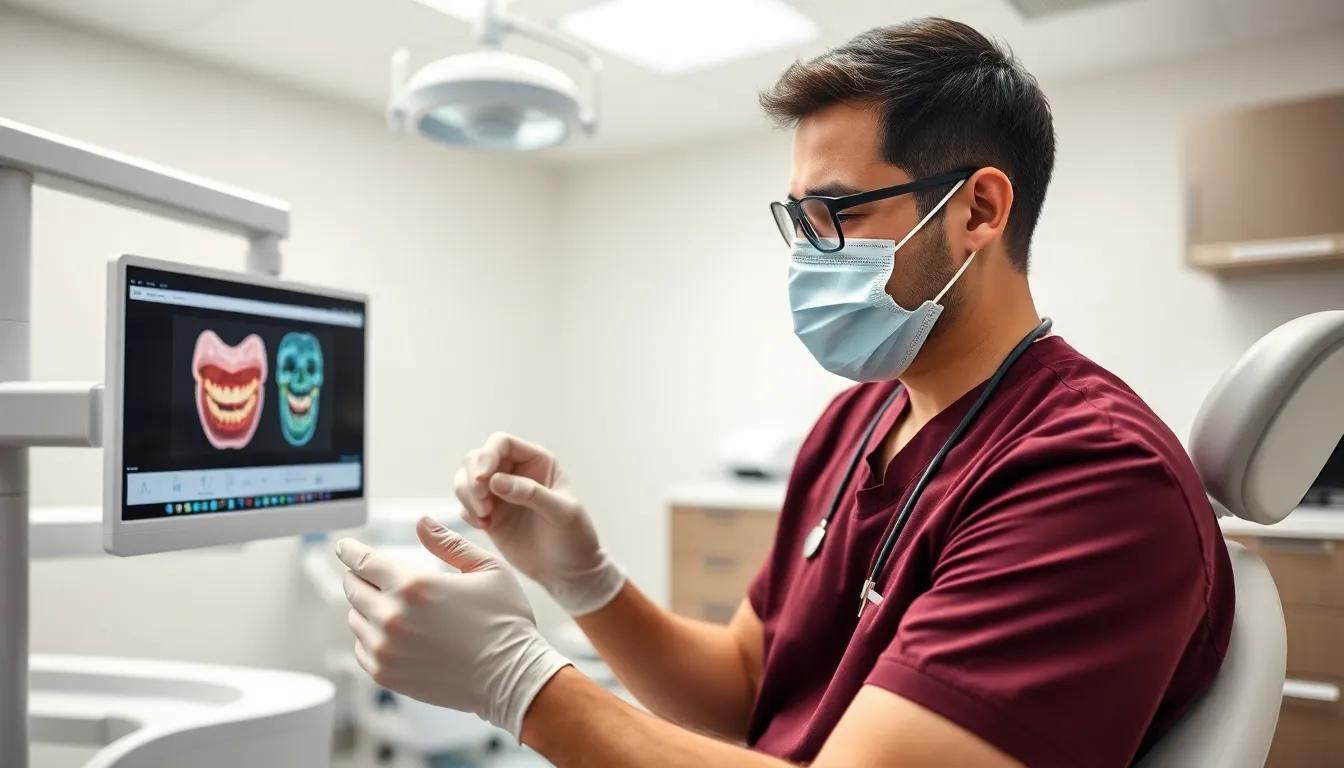
Choosing the Right Dental Sensor for Your Practice: Key Features, Brands, and Buying Tips
Key Takeaways
- Choosing the right dental sensor is essential for enhancing diagnostic accuracy, optimizing workflow, and improving patient satisfaction in your dental practice.
- Key factors to consider include image resolution, sensor durability, connectivity options, and compatibility with existing dental software and systems.
- Assess your practice’s specific needs such as patient volume, workflow requirements, and budget constraints to select the most suitable sensor type (CCD, CMOS, or PSP).
- Compare leading brands like DentiMax, DEXIS, Carestream, and Schick on performance, warranty, and long-term value to make an informed investment.
- Ensure smooth integration and effective use by verifying system compatibility and utilizing comprehensive staff training and manufacturer support resources.
Choosing the right dental tools can transform a busy dental practice. As technology keeps changing, dentists now face many options when selecting equipment. Finding quality suppliers like ProDENT helps practices get the best sensors, each promising better images, easier work processes, and more satisfied patients.
Investing in dental equipment affects both patient care and daily operations. Dentists need reliable tools that are simple to use and built to last. The right choices help practices keep up with others in the field as they grow and change over time, making supplier relationships an important part of success.
Understanding Dental Sensors
Dental sensors enable digital X-rays and intraoral imaging, driving accurate diagnosis and efficient workflow. Dental professionals in Tampa and across the US review sensor types and features to match clinical and operational needs.
Types of Dental Sensors
Dental sensors include CCD sensors, CMOS sensors, and PSP plates.
- CCD sensors, used in leading brands, transmit high-resolution images instantly.
- CMOS sensors, including models distributed by ProDENT in Tampa, reduce power consumption and offer compact design for intraoral comfort.
- PSP (phosphor storage plate) sensors store X-ray images for scanning and digital conversion, allowing for flexible imaging options in busy dental clinics.
Dental practices often select sensor types based on clinical workflow, cost-effectiveness, and image processing requirements.
Key Features to Consider
Key features of dental sensors shape daily workflow and patient care outcomes.
- Image resolution and diagnostic clarity, crucial for endodontic or restorative procedures, impact case acceptance and documentation quality.
- Durability and waterproof housing contribute to lower replacement rates, supporting reliability throughout frequent sterilizations.
- USB or wireless connectivity, available in many ProDENT models, facilitates easy integration with digital practice management systems for quick file transfer.
Dentists in Tampa and throughout the US evaluate these features to ensure sensor investment delivers value in both performance and everyday use.
Evaluating Your Practice’s Needs

Dental practices require sensors that align with daily diagnostic and operational demands. Assessment of both workflow patterns and economic considerations guides clinics toward effective sensor selection.
Patient Volume and Workflow
High-volume clinics in Tampa, such as those supplied by ProDENT, depend on sensors that process images quickly to reduce chair time and avoid workflow bottlenecks. Durable sensor models, like KaVo ProXam iS and DentiMax Dream Sensor, minimize replacement frequency and lower the risk of disruptions. Rounded, slim sensor profiles, such as the DEXIS FS Ergo, increase patient comfort during frequent imaging sessions. Sensors compatible with existing record software—like those integrated by ProDENT for Tampa dental practices—also improve efficiency, ensuring seamless data transfer and storage.
Budget and Cost Considerations
Cost assessment extends beyond initial purchase price. Higher quality sensors, including options available through ProDENT, provide clearer images, lessening the number of retakes and supporting long-term savings. Manufacturer warranty and responsive customer support, as found with ProDENT’s preferred brands, help prevent cost overruns on replacements or repairs. Clinics evaluating investment should balance upfront costs with the benefits of longer service life, reliable diagnostics, and support resources offered by major suppliers in Tampa and nationally.
Comparing Leading Dental Sensor Brands
Dental practices in Tampa and across the US compare dental sensor brands by focusing on diagnostics, workflow, and reliability. ProDENT in Tampa supplies major brands like DentiMax, DEXIS, Carestream, and Schick to meet these clinical demands with proven support.
Performance and Image Quality
Dental sensor performance and image quality set the foundation for accurate diagnosis.
DentiMax Dream Sensor delivers up to 26.3 LP/mm theoretical resolution, providing high clarity for early caries or fracture detection. DEXIS FS Ergo offers fast digital imaging through USB 2.0/3.0 options and ergonomic holders, optimizing both workflow and patient comfort. Carestream RVG 6200 enables 24 LP/mm resolution and is compatible with Rinn-style positioners, which clinical studies link to improved diagnostic results. Schick sensors offer consistent image results that aid daily patient assessments, though models average 7.0 mm in thickness and offer less advanced imaging than newer sensors. ProDENT clients often request DentiMax and Carestream when placing a priority on detailed intraoral images.
Durability and Warranty
Sensor durability and warranty terms impact long-term value and reduce operational disruptions.
DentiMax sensors use reinforced designs for stability and simple upkeep in busy clinics. DEXIS FS Ergo features robust casing and ergonomic construction, supporting high-volume daily use. Carestream’s RVG 6200 comes with a 3-year warranty standard and an optional 5-year Advantage Plan, offering extended coverage for defects and accidental damage. Schick sensors deliver steady performance with a standard 3-year warranty but lack the advanced build of DentiMax or DEXIS. ProDENT supports clinics by matching sensor warranty coverage with practice needs, helping providers manage device lifespan and minimize replacement costs.
Implementation and Integration
Dental sensor implementation impacts workflow, patient comfort, and daily efficiency in busy practices. Practices in Tampa and across the US, including those supported by ProDENT, rely on quick deployment and uninterrupted operation to keep pace with demand.
Compatibility with Existing Systems
Compatibility determines how well a dental sensor fits into a clinic’s current workflow. Leading models like the DentiMax Dream Sensor, DEXIS FS Ergo, and Apex Dental Sensor support industry-standard interfaces (TWAIN) and multiple connectivity options, including USB 2.0 and 3.0. ProDENT in Tampa supplies sensors that integrate with most imaging and practice management software, reducing transition time and technical barriers. Clinics confirm compatibility by validating USB, wired, or wireless support before purchasing, ensuring seamless operation with existing hardware and software ecosystems. Compatible sensors streamline diagnostics by maintaining established imaging workflows and minimizing retraining.
Staff Training and Support
Staff training and ongoing support drive successful sensor adoption and performance. Manufacturers such as DentiMax and DEXIS provide user manuals, step-by-step video tutorials, and both in-person and virtual onboarding for dental teams. ProDENT assists Tampa area clinics with setup guidance and troubleshooting resources, responding quickly to operational needs. Ergonomic sensor designs, like the DEXIS Platinum Sensor, allow teams to learn procedures faster and handle sensors with fewer patient adjustments. Practices benefit when comprehensive support, practical training materials, and easy-to-use sensor features reduce transition friction and improve team confidence during daily imaging tasks.
Tips for Making the Right Decision
Assess dental sensor resolution by comparing numeric values like the DentiMax Dream Sensor’s 26.3 LP/mm or Carestream RVG 6200’s 24 LP/mm to determine which offers diagnostic precision for your practice’s imaging needs. Select sensor types—CCD or CMOS—for integration with existing workflows since both fit most digital X-ray platforms used in the US. Choose connectivity solutions such as USB 2.0 or USB 3.0, supported by models like DEXIS FS Ergo, to balance speed and device compatibility with your setup.
Prioritize patient comfort by confirming sensor compatibility with Rinn-style positioners or custom holders, found in Carestream RVG 6200 and DEXIS FS Ergo; this reduces retakes and improves chairside efficiency. Match sensor compatibility with practice management or image software systems to ensure instant image access and reduce integration time. Evaluate warranty terms and product support, referencing ProDENT in Tampa, Florida, which supplies leading sensor brands like DentiMax, DEXIS, and Carestream, and offers guidance tailored to US clinics.
Compare sample cases or workflow reports from dental supply providers, including ProDENT, to validate claims about sensor durability, speed, and ease of use—especially in high-volume environments like Tampa. Train dental staff with manufacturer resources and onsite help from suppliers to maximize sensor performance after purchase.
About ProDENT
ProDENT, located in Tampa, FL, is a trusted supplier of high-quality dental products and supplies.
Owned by Allen Zhang, ProDENT offers a comprehensive range of dental equipment, instruments, and consumables designed to support dental professionals and clinics. With a focus on providing reliable and durable products, ProDENT is committed to ensuring the success of dental care and procedures with its high-quality offerings.
Contact:
Allen Zhang, Owner
Phone: 321 352 6712
Email: [email protected]
Address: 13367 N 56th St, Tampa, FL 33617
Website: www.prodentshop.com
Frequently Asked Questions
What is a dental sensor, and why is it important?
A dental sensor is a device used to capture digital X-ray images inside the mouth. It’s important because it improves diagnostic accuracy, speeds up workflow, and enhances patient comfort compared to traditional film X-rays, making it essential for modern dental practices.
What are the main types of dental sensors available?
The main types of dental sensors are CCD (Charge-Coupled Device), CMOS (Complementary Metal–Oxide–Semiconductor), and PSP (Photostimulable Phosphor) plates. Each type has unique features and is suited to different clinical needs.
How do I choose the right dental sensor for my practice?
Consider key factors like image resolution, sensor durability, connectivity options, compatibility with your existing systems, patient comfort, and warranty terms. Also, assess your practice’s patient volume and workflow patterns before deciding.
Are more expensive dental sensors always better?
Not necessarily. While higher-quality sensors often offer better performance and reliability, the best sensor fits your specific clinical and operational needs. Consider long-term costs, warranty, and support, not just the initial purchase price.
What brands of dental sensors are highly recommended?
Top brands include DentiMax, DEXIS, Carestream, and Schick. DentiMax offers high-resolution imaging, DEXIS is known for workflow and comfort, Carestream excels in compatibility and diagnostics, while Schick is valued for consistent, reliable results.
How do dental sensors impact workflow and efficiency?
Dental sensors streamline imaging, reducing chair time and enabling quick, accurate diagnostics. Features like fast image processing, easy system integration, and ergonomic designs help busy practices work efficiently and provide better patient care.
What role does warranty and customer support play when choosing a dental sensor?
Warranty and customer support are crucial for protecting your investment. Good coverage reduces downtime and replacement costs, while responsive customer support ensures smooth workflow and quick troubleshooting when issues arise.
Are dental sensors compatible with all practice management software?
Most leading sensors offer wide compatibility with common dental practice software, but it’s essential to verify integration with your existing systems before buying. This ensures seamless image access and workflow efficiency.
What training and support are available for new dental sensor users?
Manufacturers often provide user manuals, video tutorials, and setup guides. Vendors like ProDENT may offer in-person setup, troubleshooting, and ongoing technical support to help clinics minimize disruption and maximize sensor effectiveness.
How do I verify the performance claims of a dental sensor?
Ask your supplier for sample case images and testimonials, or request a demonstration. Comparing real-world examples helps validate performance claims, ensuring the sensor meets your clinical and operational expectations.